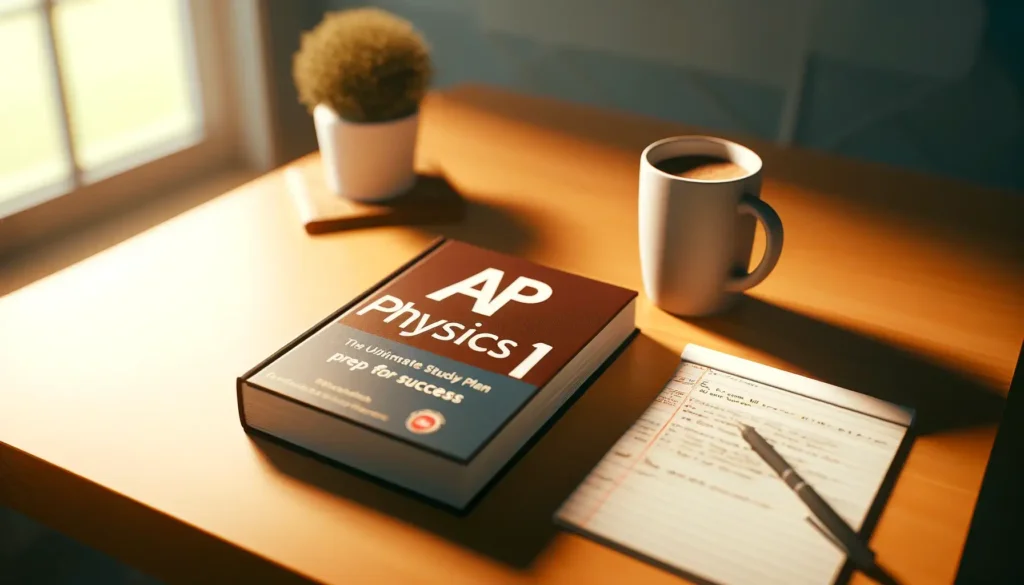Overview
➜ New Exam – FOUR FRQs in 100 minutes
➜ Read all the AP Physics 1 2025 exam changes here
➜ See 2026 PREDICTED FRQ questions (at end of post)
FRQs often involve more than one Unit at a time. Thus some questions may show up under multiple sections.
For more test FRQ and MCQ questions Try UBQ — it’s free with explanations and instant AI grading.
To calculate or predict your AP score, use this calculator.
Upcoming test? Check out AP Physics 1 in 10 minutes (speed reviews)
Lastly, here’s 12 more FREE study tools to supercharge your learning.
Unit 1 Kinematics
- 2023 Q2 – Experimental design, cart on ramp, linearization.
- 2021 Q1 – Biker jump, motion graph.
- 2015 Q4 – Linear kinematics, motion graphs.
Unit 2 Dynamics, forces
- 2023 Q2 – Experimental design, cart on ramp, linearization.
- 2023 Q3 – Spring, circular motion, FBD.
- 2021 Q2 – Experimental design, dynamics, rod width vs stretch.
- 2019 Q2 – Atwood machine, FBD, Kinematics.
- 2017 Q2 – Experimental design, friction coefficient.
- 2016 Q3 – Bumpy incline, motion graphs.
- 2015 Q1 – 3 block pulley system. Atwood machine
Unit 2.5 Circular Motion and Gravitation
This unit is now combined with unit 2 in the 2025 revised AP Physics 1 curriculum.
- 2024 Q1 – (Part C) Velocity of block traveling around two loops.
- 2023 Q3 – Spinning block, FBDs, tangential speed.
- 2022 Q2 – Two orbiting moons, gravitation, circular motion.
- 2018 Q1 – Orbiting spacecraft, circular motion.
Unit 3 Energy
- 2025 Q2 – Finding velocity of block on inclined ramp with spring at bottom + energy bar charts.
- 2024 Q1 – Energy bar chart for block around two loops
- 2024 Q2 – Vertical spring + cylinders experimental and horizontal spring + cart experimental
- 2023 Q1 – Horizontal spring, block on cart collision, harmonic motion, energy graphs.
- 2023 Q5 – Spinning rod, energy, torque.
- 2022 Q1 – Pulley, spring, energy bar chart.
- 2022 Q3 – Experimental design, hanging block pulley, energy graphs.
- 2022 Q5 – Vertical spring, motion graphs, energy.
- 2021 Q1 – Biker jump, projectile, motion graph.
- 2021 Q4 – Rolling cylinder, sliding block, energy.
- 2019 Q1 – Spring, block, friction.
- 2019 Q3 – Experimental design, spring launcher, projectile.
- 2017 Q4 – Ramp energy, projectile motion.
- 2016 Q2 – Energy, elastic collision.
- 2015 Q3 – Springs, friction, energy graph.
Unit 4 Momentum
- 2025 Q1 – Block dropped on moving cart. Deriving and graphing impulse.
- 2024 Q4 – Elastic collision and graphing the center of mass.
- 2023 Q4 – Wheel vs disk pulley, angular momentum.
- 2022 Q4 – Clay vs ball collision, velocity of center of mass, projectile.
- 2021 Q3 – Impulse, momentum, disk collision.
- 2019 Q1 – Collisions, velocity of center of mass, motion graph.
- 2017 Q3 – Ball and rod collision, angular momentum.
- 2016 Q2 – Experimental design, bouncy ball.
Unit 5 & 6 Rotation
This includes rotational kinematics, torque, rotational energy, and angular momentum
- 2025 Q3 – Experimental. Finding mass of meter stick using a spring scale and two different pivot points.
- 2024 Q3 – Horizontal beam on wall suspended by tension at varying angles (static torque)
- 2023 Q4 – Single block moving pulley system, Newton’s law of rotation.
- 2023 Q5 – Spinning rod, energy, torque.
- 2023 Q4 – Wheel vs disk pulley, angular momentum.
- 2022 Q3 – Experimental design, hanging block pulley, energy graphs.
- 2021 Q5 – Pulley with mass, motion graph.
- 2021 Q4 – Rolling cylinder, sliding block, energy.
- 2019 Q1 – Angular momentum + friction (part b)
- 2018 Q3 – Rotating disk, frictional torque, motion graphs.
- 2017 Q3 – Disk-bar collision, momentum.
- 2016 Q1 – Rolling wheel, sliding block, rotational energy.
Unit 7 Simple Harmonic Motion
- 2024 Q4 – Pendulums on different planets.
- 2023 Q1 – Horizontal spring, block on cart collision, harmonic motion, energy graphs.
- 2022 Q5 – Vertical spring, motion graphs, energy.
- 2018 Q5 – Two block collision on a spring.
Unit 8 – Fluids
Newest edition to the Exam.
- 2025 Q4 – Applying Archimedes principle to a submerged block in water of varying density
There are FRQs from past AP Physics TWO exams listed below (with direct links). Some parts of each question may not be applicable to AP Physics 1.
- 2023 Q3 – Torricelli’s equation, Bernoulli’s principle, and density
- 2019 Q4 – Height of air bubble
- 2018 Q4 – Boat in a river, bouncy and Bernoulli’s principle
- 2017 Q1 – Water flowing through a non-uniform pipe + air bubbles
2026 FRQ Topic Prediction (AI Analysis)
Phy AI Says:
Based on past frequency, here’s what we can expect for the 2026 FRQ section:
- Energy (Unit 4) appears 14 times—the most frequent, so expect one FRQ focused on energy concepts (bar charts, collisions, experimental design).
- Rotation (Unit 6) comes next with 11 instances. This suggests a strong possibility of a rotation/torque FRQ.
- Dynamics (Unit 2) and Momentum (Unit 5) each show up 7 times, making them likely candidates to fill the remaining FRQs—possibly integrated with other concepts.
Thus, for four FRQs, you might see one on energy, one on rotation, and the remaining two drawing on dynamics/momentum (or integrated problems involving these topics).
You can try Phy Here to start learning and solving science and math problems.


